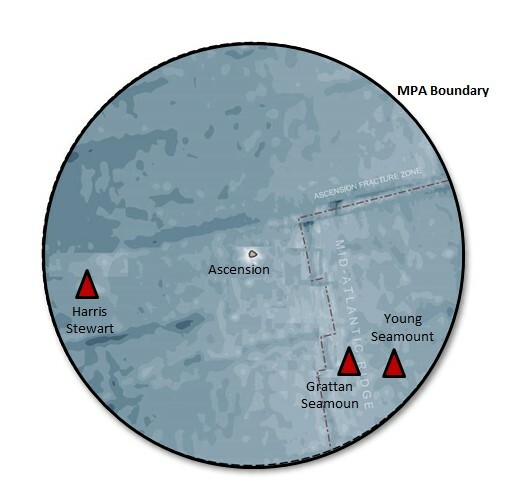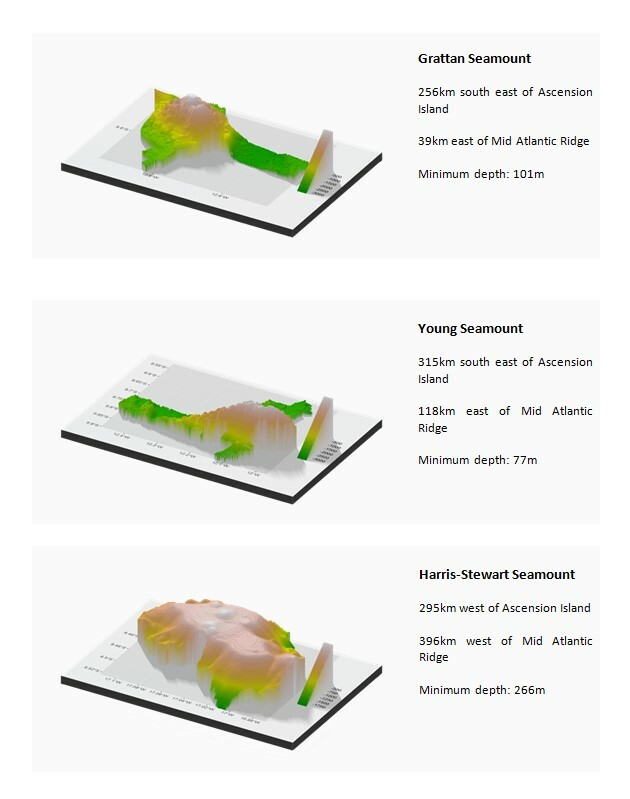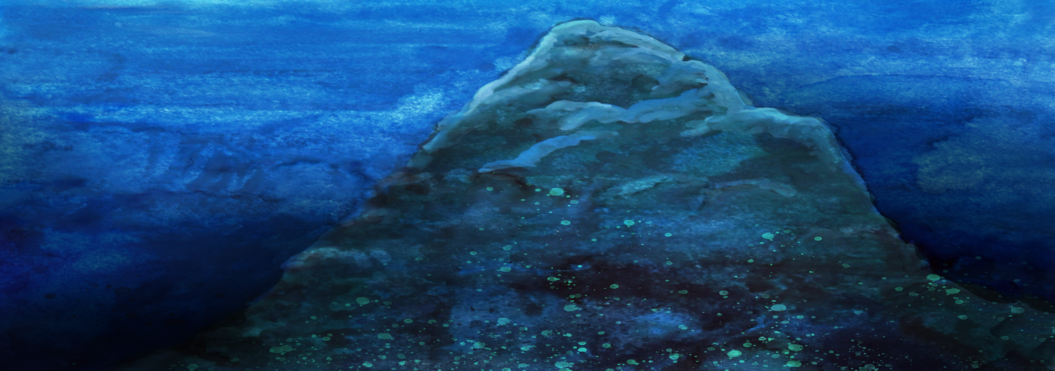When ocean currents meet the seamounts, the nutrient-rich water in the deep ocean is forced upwards and, in the case of the Grattan and Young seamounts, rises close enough to the surface of the ocean to be within the depth that sunlight can penetrate. This combination of nutrient-rich water and sunlight creates the perfect conditions for phytoplankton growth, which can then support a rich ecosystem including a high abundance of large pelagic fish around the seamounts compared to the wider ocean.

The rocky slopes of the seamounts also provide a stable substrate for species to grow on, and the upper slopes within the reach of sunlight can be particularly rich in life. Deep-water Lophelia spp. and cup corals along with sponges and a diverse range of crustaceans have been recorded on the lower slopes of the Ascension seamounts, with black corals and encrusting algae found at shallower depths.
The habitats and feeding opportunities provided by seamounts may play an important role in the migration and dispersal routes of marine species. They form ‘stepping stones’ between Ascension and neighbouring St Helena and could be crucial to maintain the biological connection between the two islands.


